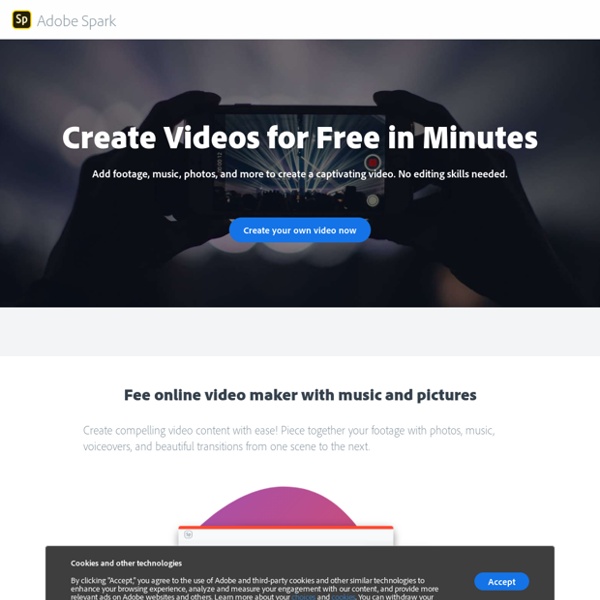



https://spark.adobe.com/make/video-maker/?
Related: kolla upp • Tech Tools • ClassroomLearning Registry The Learning Registry is not intended to be your portal into the world of digital resources but rather a conductor that developers can use to create the user-friendly and tailored tools you need. You are currently looking “behind the scenes” of some tools that you already enjoy. While you are welcome to take the Learning Registry for a test drive below, the primary audiences for this site are publishers and developers who, together, can create the user-friendly, tailored tools you are looking for. Check Out Some of the Current Tools and Apps Available There are a growing number of developers generating tools for educators that are powered by the Learning Registry. You can check out tools created for more specific audiences of educators on the page of Community Projects.
6 Great Interactive Tools to Try Out in Your Class December 13, 2017 Here are six of our favourite interactive tools you can use with students in your class. These are all tools created and shared by ReadWriteThink. Some of the things students can do with these tools include: mapping out arguments for a persuasive essay or debate, summarizing and synthesizing information using cube Creator, creating newspapers and brochures, preparing for reading activities using K-W-L Creator and many more. Collaborative Zines: Making Art History Accessible to Pre-Service Educators As new, digital technologies emerge and improve–from augmented and virtual realities to advancements in 3D printing to smart phone capabilities–there has also been a notable resurgence of analog technologies. Vinyl records and cassette tapes, Polaroid cameras and film and even typewriters are being produced at increased rates. With this resurges comes a renewed interest in zines, the lo-fi, self-published booklets or magazines typically produced on the photocopier. Zine gatherings and swaps are taking place in cities across the country, like Printed Matter’s The NY Art Book Fair and LA Art Book Fair. New Orleans Comics and Zine Fest, Chicago Zine Fest, PHX Zine Fest, Press Fest Austin , just to name a few.
Grammaropolis Oh no! Grammaropolis is currently experiencing problems with our video streaming service. Until service has been restored, please check out the music videos on our YouTube page. Science for Kids: Composition of the Earth Science >> Earth Science for Kids It may seem like the Earth is made up of one big solid rock, but it's really made up of a number of parts. Some of them constantly moving! You can think of the Earth as being made up of a number of layers, sort of like an onion. These layers get more and more dense the closer to the center of the earth you get. See the picture below to see the four main layers of the earth: the crust, mantle, outer core, and inner core. Crust
SEALL – Supporting EAL Learners Most classrooms are decorated with students’ work, info graphs and posters. Unfortunately they are static and are rarely used for learning. A way to make your displays more interactive is by making sure to leave space for translations for students’ own languages 5 Good Alternatives to Google Image Search Google Images tends to be the default image search tool of students and adults who haven't been introduced to better options. Google Images is convenient, but it's not the best place for students to find images that are in the public domain or images that have been labeled with a Creative Commons license. Here are five better options. Unsplash offers a huge library of images that are either in the public domain or have a Creative Common license.
Art 1 The elements and principles of design are the building blocks used to create a work of art. Elements of Art are the visual "tools" that artists use to create an art work - they are what makes up an image or an art object: line, shape/form, value, color, space, and texture. Principles of Design are the ways artists use the Elements of Art in an artwork - this is "what we do with the Elements" - how we arrange them, how we balance them, what is being emphasized, etc. The principles are: balance, contrast, repetition, emphasis, and unity. elements of art Elements of Art are the visual "tools" that artists use to create an art work